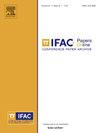使用完全离散化同时优化训练神经ode
Q3 Engineering
引用次数: 0
摘要
神经常微分方程(Neural ode)用神经网络表示连续时间动力学,为建模和控制任务提供了进步。然而,训练神经ode需要在每个历元解微分方程,导致计算成本高。这项工作研究了同步优化方法作为一种更快的训练选择。特别是,我们采用基于搭配的完全离散化公式,并使用ipopt -一种大规模非线性优化求解器-同时优化搭配系数和神经网络参数。以Van der Pol振荡器为例,我们证明了与传统训练方法相比更快的收敛速度。此外,我们还引入了一种利用乘数交替方向法(ADMM)的分解框架,以有效地协调数据批次之间的子模型。我们的结果显示了(基于搭配的)同步神经ODE训练管道的巨大潜力。本文章由计算机程序翻译,如有差异,请以英文原文为准。
Training Neural ODEs Using Fully Discretized Simultaneous Optimization⁎
Neural Ordinary Differential Equations (Neural ODEs) represent continuous-time dynamics with neural networks, offering advancements for modeling and control tasks. However, training Neural ODEs requires solving differential equations at each epoch, leading to high computational costs. This work investigates simultaneous optimization methods as a faster training alternative. In particular, we employ a collocation-based, fully discretized formulation and use IPOPT—a solver for large-scale nonlinear optimization—to simultaneously optimize collocation coefficients and neural network parameters. Using the Van der Pol Oscillator as a case study, we demonstrate faster convergence compared to traditional training methods. Furthermore, we introduce a decomposition framework utilizing Alternating Direction Method of Multipliers (ADMM) to effectively coordinate sub-models among data batches. Our results show significant potential for (collocation-based) simultaneous Neural ODE training pipelines.
求助全文
通过发布文献求助,成功后即可免费获取论文全文。
去求助
来源期刊

IFAC-PapersOnLine
Engineering-Control and Systems Engineering
CiteScore
1.70
自引率
0.00%
发文量
1122
期刊介绍:
All papers from IFAC meetings are published, in partnership with Elsevier, the IFAC Publisher, in theIFAC-PapersOnLine proceedings series hosted at the ScienceDirect web service. This series includes papers previously published in the IFAC website.The main features of the IFAC-PapersOnLine series are: -Online archive including papers from IFAC Symposia, Congresses, Conferences, and most Workshops. -All papers accepted at the meeting are published in PDF format - searchable and citable. -All papers published on the web site can be cited using the IFAC PapersOnLine ISSN and the individual paper DOI (Digital Object Identifier). The site is Open Access in nature - no charge is made to individuals for reading or downloading. Copyright of all papers belongs to IFAC and must be referenced if derivative journal papers are produced from the conference papers. All papers published in IFAC-PapersOnLine have undergone a peer review selection process according to the IFAC rules.
 求助内容:
求助内容: 应助结果提醒方式:
应助结果提醒方式:


